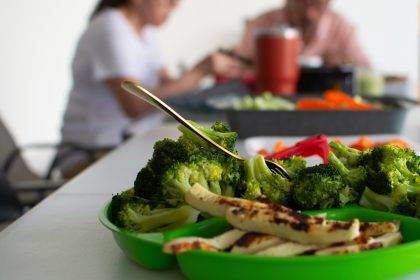You’ve been crushing those workouts, carefully counting calories, and feeling pretty good about your weight loss journey. But here’s the uncomfortable question keeping fitness pros up at night — what if your body is snacking on your hard-earned muscle instead of those stubborn fat stores?
The answer might be more complicated than you think, and knowing the difference could completely transform your fitness results. Let’s dive into what’s actually happening under your skin during those sweat sessions.
The hidden hierarchy of burn
Your body is basically a walking chemistry experiment with preferences about which fuel tanks to drain first. Think of it like having three gas cans in your car — your body has very specific ideas about which one it wants to use before moving on to the next.
When you start moving, your body immediately reaches for the easiest energy source available — carbohydrates. They’re quick to break down and perfect for fueling everything from your morning stroll to your intense HIIT session.
But what happens when that first fuel tank starts running dry? This is where things get interesting. Contrary to what many believe, your body doesn’t immediately start dissolving your biceps for energy. Instead, it switches to fat stores through a process called fat oxidation.
During fat oxidation, your body essentially unlocks your fat cells and converts them into usable energy. It’s like cracking open a piggy bank you’ve been filling with extra calories for years. Those stored fats become free fatty acids that power your continued movement.
Your muscles? They’re actually the last resort fuel source, only tapped when both carb and fat stores are seriously depleted. Think of muscle as the emergency backup generator your body really doesn’t want to use unless absolutely necessary.
The real order of operations
Let’s break down exactly how your body prioritizes fuel sources during exercise:
First up are the carbs you just ate. That pre-workout banana or toast provides immediate energy for your session. Your body loves using these fresh carbs because they’re already in your bloodstream, ready to power your movements.
Next come your glycogen stores. These are essentially carbohydrates your body has saved for later, stored primarily in your muscles and liver. Think of glycogen as your body’s carbohydrate savings account, built up from previous meals.
Once glycogen starts running low, your body switches to burning fat. Those love handles and stubborn belly pouches become your new energy source. This typically happens during longer workouts or when you’re exercising in a fasted state.
Only after exhausting these other fuel sources does your body reluctantly turn to breaking down muscle protein for energy. This usually only happens in extreme conditions like severe calorie restriction or extremely long endurance activities without proper fueling.
The takeaway? Your body actually prefers burning fat over muscle when carbs aren’t available. But there’s a catch — being in too dramatic a calorie deficit can push your body toward muscle breakdown sooner than you’d like.
The dangerous deficit trap
Many enthusiastic dieters fall into the same well-intentioned trap — cutting calories too drastically in hopes of faster results. Creating a moderate calorie deficit is indeed necessary for fat loss, but go too far and your body rebels in ways that sabotage your goals.
When you slash calories too aggressively, dropping more than 1,000 below your maintenance level, your body senses danger. Rather than cooperating with your beach body plans, it shifts into conservation mode, preferentially holding onto fat stores while being more willing to sacrifice muscle.
This explains why crash diets often lead to the dreaded “skinny fat” look — where you end up smaller on the scale but soft and lacking definition. You’ve lost weight, but a significant portion came from muscle rather than fat.
The smart approach? Aim for a moderate deficit of 300-500 calories daily, which supports fat loss while giving your body enough resources to preserve muscle tissue. This might mean slower progress on the scale, but the visual results will speak for themselves.
Saving muscle while torching fat
Now for the million-dollar question — how do you ensure your body burns fat while sparing your hard-earned muscle? The answer lies in a strategic combination of what you eat and how you move.
Protein becomes your best friend in this scenario. Consuming adequate protein, ideally spread throughout the day, provides your body with the amino acids needed for muscle maintenance and recovery. Aim for approximately 0.7-1 gram of protein per pound of body weight daily if you’re active and trying to preserve muscle.
Strength training sends a powerful signal to your body that your muscle is valuable and worth keeping around. Even during weight loss phases, lifting weights consistently tells your body that this tissue serves an important purpose. Without this stimulus, your body has less incentive to preserve muscle when energy is scarce.
Proper workout fueling makes a massive difference too. A small carbohydrate-rich snack with some protein about 45 minutes before exercise ensures your body has readily available energy, reducing the likelihood it will tap into muscle for fuel during your session.
After your workout, the recovery window is crucial. Combining carbs and protein within an hour post-exercise helps replenish glycogen stores and provides the building blocks needed for muscle repair. Something as simple as a protein shake with a banana can work wonders.
Finally, don’t exile cardio from your routine, but be strategic about it. While strength training preserves muscle, cardiovascular exercise helps create the calorie deficit needed for fat loss while improving your heart health and endurance. The ideal approach combines both in a balanced program tailored to your goals.
Reading your body’s signals
How can you tell if your body is burning fat or cannibalizing muscle? The clues are there if you know what to look for.
When you’re primarily losing fat, you’ll notice your clothes fitting differently while maintaining your strength in the gym. Your body will become more defined as the fat layer covering your muscles thins out.
Warning signs that you’re losing too much muscle include feeling unusually weak during workouts, struggling with weights that used to feel manageable, and noticing that while the scale number is dropping, your body looks softer rather than more defined.
Pay attention to recovery too. If you’re constantly sore and seem to need more time to bounce back between workouts, your body might be struggling to repair muscle tissue due to excessive breakdown or insufficient nutrition.
The long game of lean
Remember that maintaining muscle isn’t just about looking good — it’s a health investment that pays dividends throughout life. Muscle tissue burns more calories at rest than fat does, supports healthy metabolism, improves insulin sensitivity, and protects against the natural muscle loss that occurs with aging.
Think of your strength training routine as your “muscle 401K” — regular deposits now lead to significantly better quality of life later. Even if your primary goal is fat loss, preserving and building muscle should remain a priority.
The most sustainable approach to body composition changes embraces patience and consistency over quick fixes. By fueling properly, training intelligently, and giving your body the resources it needs, you can shift your body to preferentially burn fat while maintaining the muscle that gives you both function and the definition you’re working toward.
Your body is smarter than you might think — it doesn’t actually want to burn muscle for fuel. With the right approach, you can work with your body’s natural preferences rather than against them, creating lasting changes you can maintain for life.














